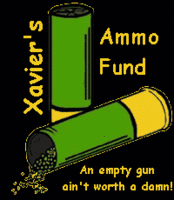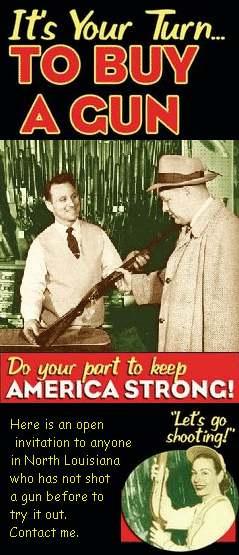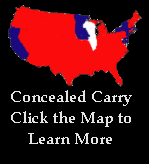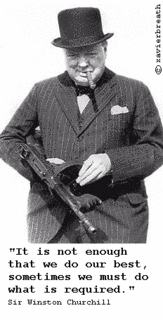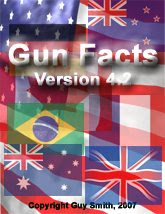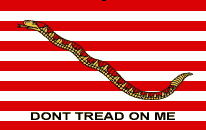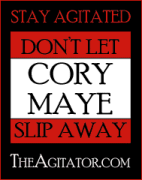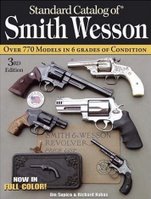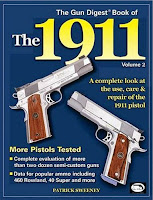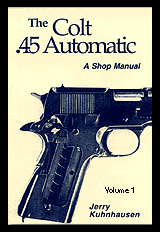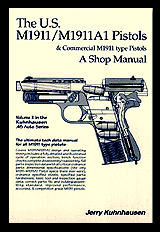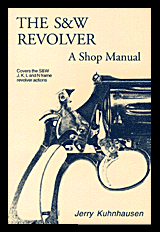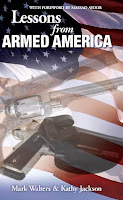Checking a Used 1911 with a Purchase in Mind
Prelude: Make sure the pistol is unloaded. Lock back the slide and check the chamber. Put a finger on top of the magazine follower and across the chamber. Look again. Make sure the pistol is unloaded. During all of this inspection process, keep the muzzle in a safe direction.
#1 Check Originality.
Know what the pistol should look like.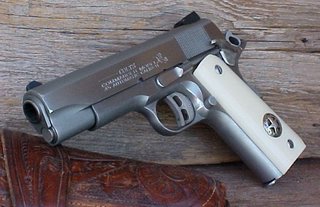 Know what the markings on the frame and slide should be and where they should be located. There are many mix master pistols out there, and some are quite good. Essex is not a secret Colt foundry in Area 51 though. Non-original small parts that can be recified do not necessarily lower the price of a pistol, nor do well installed aftermarket parts that work right if the buyer wants that modification. However, they do show that someone has been monkeying around with the pistol, and other inspections should be carried out more stringently. On a collector's piece, they DO lower the value, and should have replacement cost deducted from the price accordingly. We are talking buying shooting pistols here though, not collector's guns.
Know what the markings on the frame and slide should be and where they should be located. There are many mix master pistols out there, and some are quite good. Essex is not a secret Colt foundry in Area 51 though. Non-original small parts that can be recified do not necessarily lower the price of a pistol, nor do well installed aftermarket parts that work right if the buyer wants that modification. However, they do show that someone has been monkeying around with the pistol, and other inspections should be carried out more stringently. On a collector's piece, they DO lower the value, and should have replacement cost deducted from the price accordingly. We are talking buying shooting pistols here though, not collector's guns. #2 Check For Damage
The seller should let you field strip the pistol. If he does not, pass on it. Period. There is no reason to refuse this on a used gun except to conceal damage.Once inside the gun, bring the frame and slide rails up to eye level and check them for straightness like you would a piece of lumber. A bulge on both sides of an area means this gun has suffered a KaBoom. Likewise, run the barrel between your fingers, checking for bulges. Check the bore. Check the barrel and slide lugs for damage and peening. Check the barrel seat for proper fit and signs of impact. Check the breech face and barrel hood for peening. Check the slide for cracks at the beginning of the recoil plug tunnel. Check the frame for cracks at the beginning of the dustcover and the slide stop hole. Some guns with a hole where the rear of the slide stop enters the frame will be cracked in the frame rail above the hole. This is so common that many newer guns have the rail cut out here. A crack in this area is not a cause for alarm in a shooter, but can be a bargaining chip on the price. It is easily repaired by cutting out the crack. Look for signs of an incompetent person using tools inside the pistol. The finish should show normal wear on the rails, breech face, barrel and slide lugs, and other moving parts. Holster wear is OK. In fact, it is a common sign of a gun that works as advertised. Signs of impact from tools, especially around the right slide stop hole are signs of incompetent monkeys with tools in possession of this pistol. A stripped magazine lock screw is a sign of the same.
#3 Check Functions
The slide should pull back easily, without any change in resistance along the length of it's travel. It should lock back quickly and positively with the magazine inserted. Try this both with and without the magazine checking for smoothness of travel.
Try this both with and without the magazine checking for smoothness of travel. A Wilson Combat or genuine Colt magazine should insert and lock positively, and fall free upon release, without resistance. It should not rattle in the gun. You may want to bring your own along for this check, as used guns are often sold with cheapo magazines. If the gun has an extended ejector, the magazine should not touch it when inserted.
Ask if it is OK to release the slide from slide lock. This will not harm a 1911 if not done over and over. If it is OK with the owner, remove the magazine with the pistol at slide lock. Place your left thumb on the slide lock and release the slide. The hammer should not follow the slide. Check this one more time. Then, with the hammer still cocked and your finger off the trigger, try to push it off the sear. If the hammer falls in any of these instances, the gun is not safe to load with live ammo until repaired. If the seller balks at this test, pull a snap cap out of you pocket to perform it with. The test will not be as stringent with a snap cap, but if the gun fails with a snap cap, it will certainly fail without one. If the seller balks at the use of a snap cap for the test, pass on the gun.
The thumb safety should snick on and off without resistance in either direction with the hammer cocked. The hammer should not move when engaging the thumb safety. Once engaged, press on the trigger a couple of times with the grip safety depressed. Then raise the rear of the pistol up to your ear and slowly pull back on the hammer. Listen for a little tink sound. If you hear this sound, the thumb safety is allowing the sear to move on the hammer hooks while engaged. Replacement of the thumb safety or sear will be in order.
The grip safety should not allow the trigger to be moved when not depressed. When depressed, it should offer no resistance to the trigger.
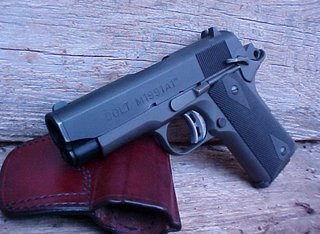 Depress the grip safety, pull the trigger back and hold it. Release the grip safety. Then release the trigger. The trigger and grip safety should both pop back out quickly and smoothly.
Depress the grip safety, pull the trigger back and hold it. Release the grip safety. Then release the trigger. The trigger and grip safety should both pop back out quickly and smoothly. With the hammer cocked and thumb safety off, use your weak hand to hold the slide about 1/8 inch out of battery while pulling the trigger. The hammer should not fall. If it does, the disconnector is worn or monkeyed with, and you may be holding a full auto 1911.
Ask to dry fire the gun. The trigger should release the hammer at a poundage suitable for your likes or greater. Greater poundage than required can be reduced without parts replacement. Making a light trigger heavier often involves new parts. The trigger should be smooth throughout it's travel, and the sear should break cleanly. Once dry fired, lock the slide back and take a look at the breechface. The firing pin should be retracted.
Insert a Bic-Stick type ball point pen into the barrel, plastic end first. Cock and drop the hammer with the barrel pointed straight up. The pen should fly out of the gun at least two feet. Any less is a sign of a weak mainspring, or a sign of firing pin damage.
#4 Check Fittment
On some pistols, such as a Colt, some lateral movement of the slide in battery is acceptable. Unless it is a match grade top of the line gunsmithed pistol, it is expected. The pistol may rattle a bit if shook vigorously from side to side and still be accurate. Other pistols, such as a Les Baer are expected to lock up tighter than Fort Knox.The rear of the slide should blend smoothly into the frame. Neither the ejector nor the extractor should be above or below the surface. The trigger should not flop around sloppily in it's track. The magazine release should be flush on the right side with a magazine inserted.
Many people evaluate barrel lock-up by pressing on the barrel hood in battery. Movement is considered to be bad. While a firm lock-up is nice, of greater importance is whether the barrel returns to the same location with each slide cycle. The muzzle end of the barrel should not move within the bushing. The slide should not have wear on the muzzle end that passes into the dustcover on recoil.
#5 Evaluating Modifications
If the pistol has any modifications, they should be well done.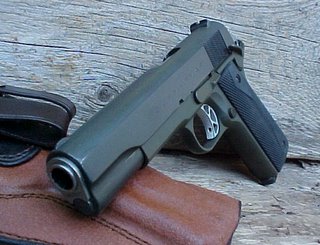 I look at the fit of aftermarket grip safeties, especially the way the lines of the pistol was blended into the line of the grip safety. If the rear of the frame has humps in it where it was blended, the gunsmith did not have an eye for quality. The gap between grip safety and frame should be no greater than the thickness of a piece of paper. The grip safety should not rub on either side of the frame.
I look at the fit of aftermarket grip safeties, especially the way the lines of the pistol was blended into the line of the grip safety. If the rear of the frame has humps in it where it was blended, the gunsmith did not have an eye for quality. The gap between grip safety and frame should be no greater than the thickness of a piece of paper. The grip safety should not rub on either side of the frame. If it has an aftermarket bushing, I remove it and check that for fit too. A correctly fit bushing should not require a bushing wrench for removal. It should not require a hammer for installation.
Aftermarket extended thumb safeties should snick on and off without mushiness or resistance. I check the underside of the left side of the slide to see if the thumb safety has been battering it. The apex of the thumb safety should be at least 1mm below the slide at rest.
An aftermarket barrel should have no peening on the hood, or the lugs. The slide of such a gun as well as the frame should be checked as well. A well fitted, quality aftermarket barrel (assuming good rifling) is always a plus for me.
Look at the sights. Quality sights with a professional installation are a big plus for me. Sights that look like Bubba bought them on sale at a gun show and installed them with a rock are not. Adjustable sights that are off center make me wonder why.
A refinished gun is not necessarly an indicator of a worn out gun.
 Many pistols are refinished after customization is completed. Some finishes, such as hard chrome enhance the durability of the gun. Others like a home baked Gun Kote job may not last long. One thing to consider is that a refinish (assuming it's not 24 kt. gold) should never add to the cost of the gun, but a bad refinish can subtract from it. A good finish is expected. The same applies to grips. If the price is being jacked up because of them, ask to buy the gun without them, unless they are factory ivory. If you want them, and they are not ivory, they should not add to the price of the gun. Ugly or dinged up grips subtract from the price.
Many pistols are refinished after customization is completed. Some finishes, such as hard chrome enhance the durability of the gun. Others like a home baked Gun Kote job may not last long. One thing to consider is that a refinish (assuming it's not 24 kt. gold) should never add to the cost of the gun, but a bad refinish can subtract from it. A good finish is expected. The same applies to grips. If the price is being jacked up because of them, ask to buy the gun without them, unless they are factory ivory. If you want them, and they are not ivory, they should not add to the price of the gun. Ugly or dinged up grips subtract from the price. A non-original full length guide rod and an extended slide stop are red flags to me. They tell me the last owner did not understand this pistol very well. Conversely, a pistol that came with a FLGR but now presents with a GI set-up tells me the last owner knew the gun. Known cheapo aftermarket parts (they are easy to spot) tell me the last owner had a ghetto mentality about the gun.
Often I will be told "This gun was done by (insert name of reknowned 'smith")". It pays to be able to recognize quality work, and to know what different people's work often looks like. Suffice to say, a gun that has passed through a reknowned gunsmith's hands should have an appearance and function several degrees above what the factory puts out, regardless of who makes the gun. It should NEVER look worse than a top of the line gun. These men do not put out trash. Many less than stellar gunsmiths do. Which brings us to item #5.
#5b Spotting Incompetent Work
People love to fiddle with a 1911. It's hard not to. It looks so easy. It's not.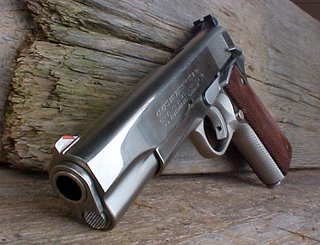 It is easier to screw up a 1911 than to "improve" one.
It is easier to screw up a 1911 than to "improve" one. The first thing that jumps out at me is buggered up grip screws. If a man cannot use a screwdriver, he is not mechanically equipped to open up a 1911. 'nuff said.
Next I look at the feed ramp with the slide locked back. There should be about a 2mm step between the bottom of the barrel and the top of the feed ramp on a Government Model. Incompetent gun hacks love to take a Dremel to the feed ramp of 1911's. If this step is not present, the gun will never feed ammo properly, and it cannot be repaired for less than the cost of a frame replacement.
I look at lowered ejection ports for the straightness of the lines. The scallop behind the ejection port should have smooth edges and be in the right place.
I look at the sights for signs of heavy handed handiwork. Punch marks around the sights and the slide stop hole, as well as stripped mag release screws and pins inserted backwards are red flags.
#6 Shooting the Pistol
One of the advantages of buying used is the ability to test fire the gun without lowering it's value in the marketplace Many sellers will allow you to fire their gun if they percieve you as a serious buyer. It never hurts to ask. Offer the owner a "test target" to help him in his sale if you do not buy. Expect to buy the ammo, and no +P ammo. No reloads from your Brother-in-Law Bernie. Only clean factory ammo, and some JHP if it's a defensive weapon. Somewhere between 50 and 100 rounds. Buy the ammo from the seller if he is a dealer. If he will only let you shoot one magazine "out back" make it your preferred JHP and try your darndest to create a jam. Offer to clean the gun when you are done. The combination of a high dollar guaranteed ammo sale, a decent test target, and a clean gun is often to much to resist if the seller trusts you. Heck, invite him along to shoot your prize Python while he waits.
Offer the owner a "test target" to help him in his sale if you do not buy. Expect to buy the ammo, and no +P ammo. No reloads from your Brother-in-Law Bernie. Only clean factory ammo, and some JHP if it's a defensive weapon. Somewhere between 50 and 100 rounds. Buy the ammo from the seller if he is a dealer. If he will only let you shoot one magazine "out back" make it your preferred JHP and try your darndest to create a jam. Offer to clean the gun when you are done. The combination of a high dollar guaranteed ammo sale, a decent test target, and a clean gun is often to much to resist if the seller trusts you. Heck, invite him along to shoot your prize Python while he waits. Once at the range, I first load three rounds of JHP and shoot them to see if I get hammer follow or a full auto effect. I do this twice, at different speeds.
Then I load a magazine full of JHP and empty it into a target as fast as I can with a limp wrist. For once, I do not care about groups. I am trying to jam the gun. I note where the empties fly. I pick one or two up and check them for centered primer strikes and dents in the case. Then I load up another magazine with JHP and do the same limp wrist procedure, except this time holding the pistol upside down. I do this often enough that the Range Officer knows I am in a buying mood.
I try to fire the pistol with the thumb safety engaged. I try to fire it with the grip safety released. I allow my thumb to ride the slide to see if I can initiate a malfunction.
If the pistol continues to work as advertised,
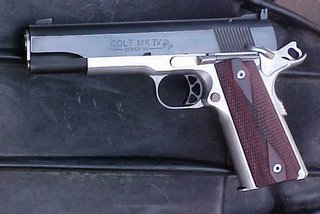 I load up some target rounds and shoot for accuracy. I am not a bullseye shooter, so I usually shoot from sandbags at 15 yards. As long as the pistol performs better than me, I figure it is accurate enough. I shoot several groups of five rounds, and compare consistency as well as accuracy. I try to eliminate any of my own shortcomings from the equation.
I load up some target rounds and shoot for accuracy. I am not a bullseye shooter, so I usually shoot from sandbags at 15 yards. As long as the pistol performs better than me, I figure it is accurate enough. I shoot several groups of five rounds, and compare consistency as well as accuracy. I try to eliminate any of my own shortcomings from the equation. If the pistol has no failures, I clean it, and get to re-examine the interior, but this time with the advantage of fresh soot and cleaning fluid. If the job is done carefully, it can reveal damage that is invisible to the naked eye. Liquified soot will travel right to a crack. A piece of cloth dragged over a part can snag on a burr the finger can not feel.
Finally, let me say that the price of the gun should be agreed on at the counter, before the test fire. You should never use the test fire as a bargaining chip to lower the price. If you do that, the seller will likely never allow you to test fire a gun again, and you might like the next gun even more. The test fire should be seen only as a means to eliminate a potential problem gun before a transfer of ownership. You should only request a test fire if you are prepared to buy right then. If you find a problem that eliminates the gun, explain what you found in good humor. Above all, do not become hostile, but do not waver. If the owner offers a lower price, consider it and take it if you like, but never, never, make him think you are trying to get him to lower the price. At the range, a change in price should always be the seller's option. One more thing, if the seller has gone this far to sell you a gun, he deserves your loyalty. He is an honest seller, the type all gun buyers look for. The ability to buy a gun you have shot first is valuable. It is a valuable consideration when you are haggling at his counter. Don't forget that.
Labels: 1911 Basics


